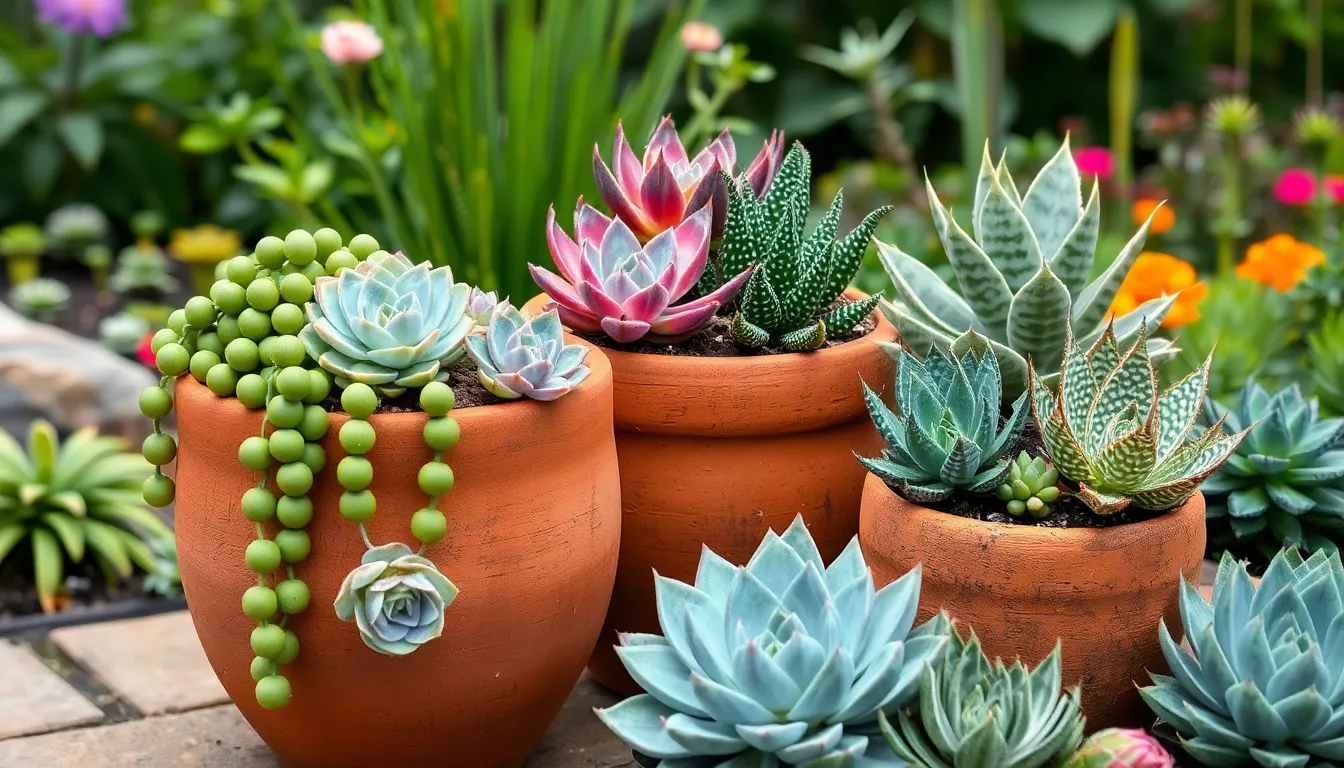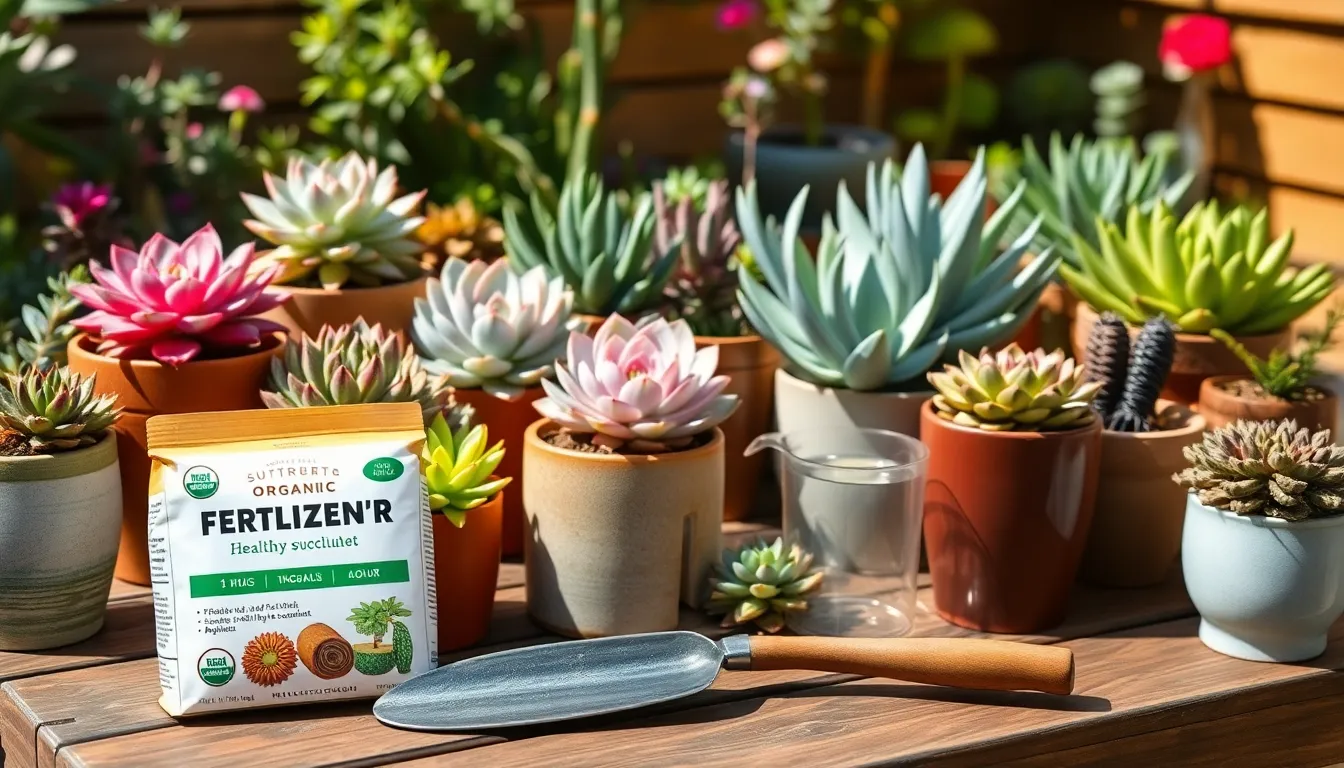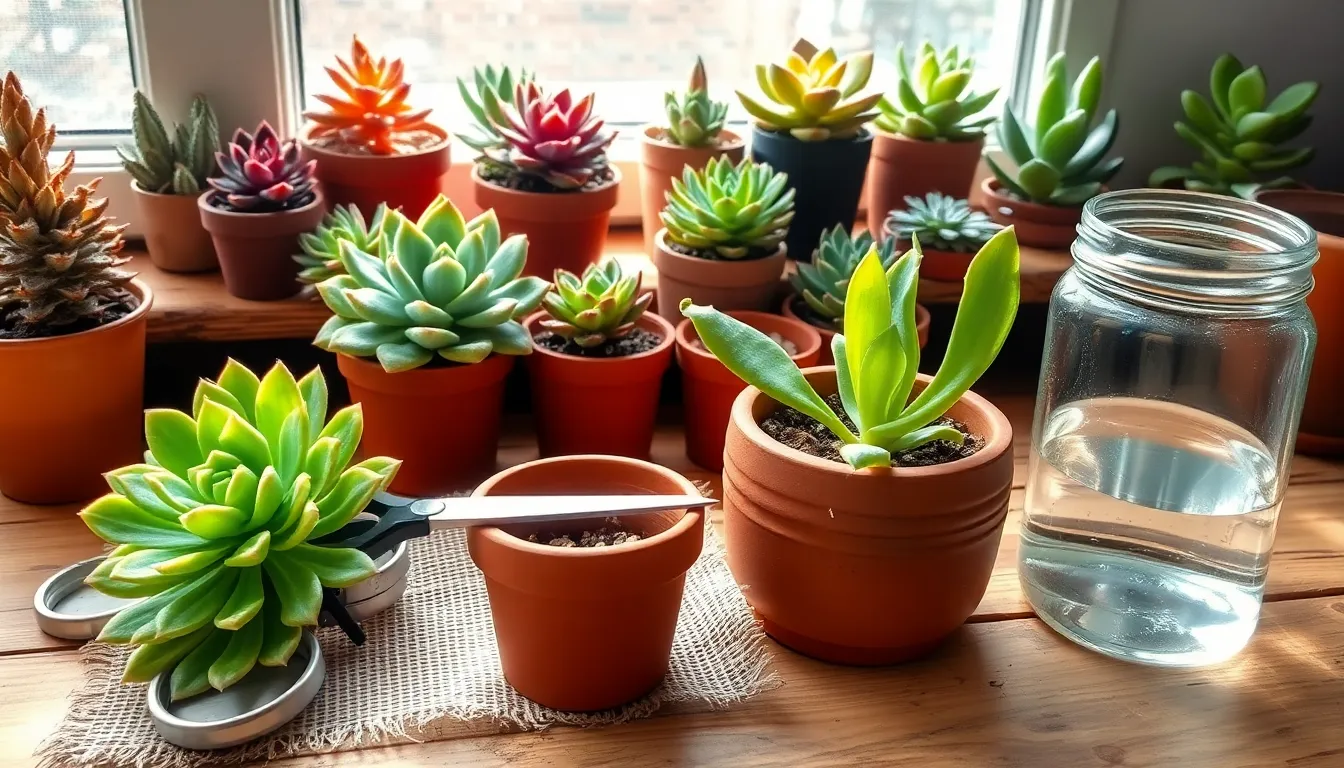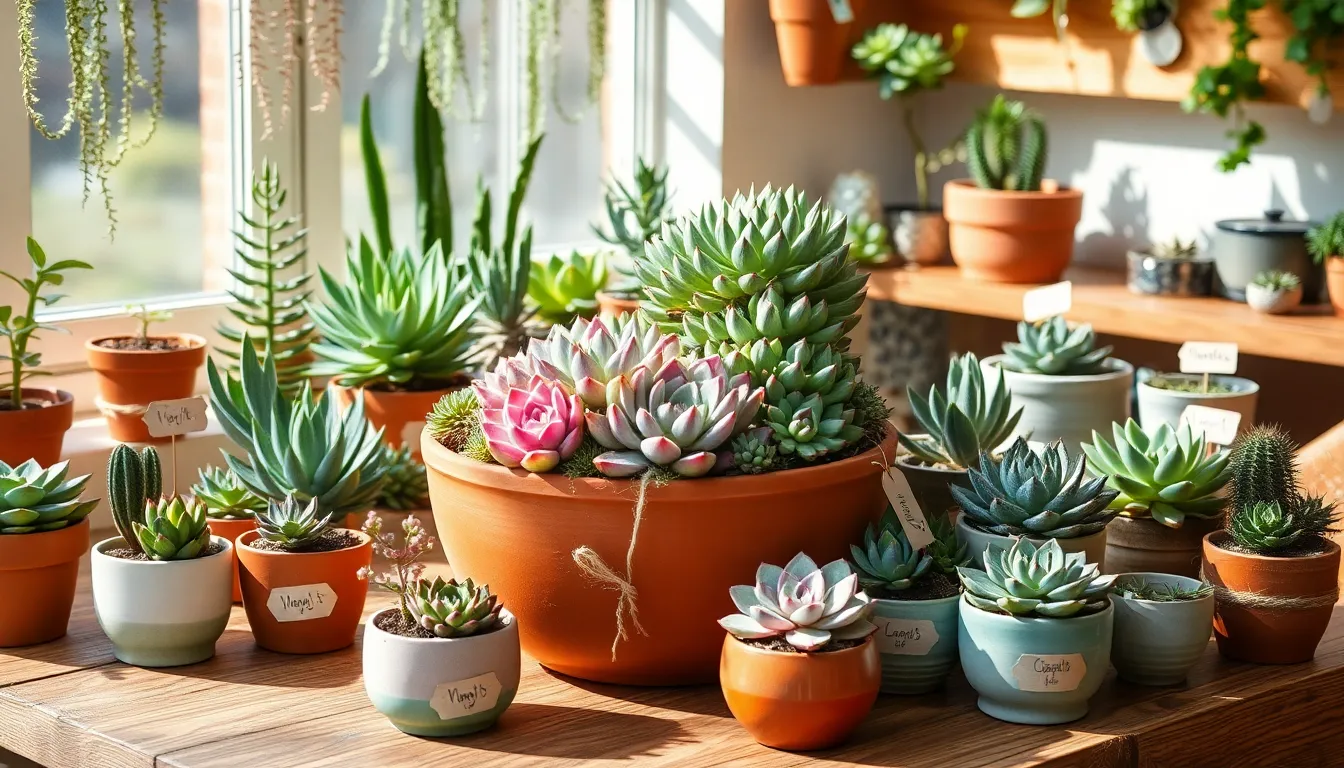As the world of gardening continues to evolve, succulents have taken center stage, capturing the hearts of plant enthusiasts both new and seasoned. With their striking forms and vibrant colors, these resilient plants have become the darlings of Instagram feeds and Pinterest boards alike, sparking a surge in their popularity.
For the budding gardener, succulents offer a gateway into the world of plant care with their low-maintenance needs and forgiving nature. Meanwhile, experienced green thumbs will find joy in exploring the diverse array of species and hybrids that are currently trending.
In this article, you’ll discover the top 16 succulents that have Pinterest buzzing, each bringing a unique flair to home and garden spaces. From care tips to creative display ideas, we’ve gathered everything you need to successfully incorporate these trendy plants into your collection.
Introduction to Trending Succulents
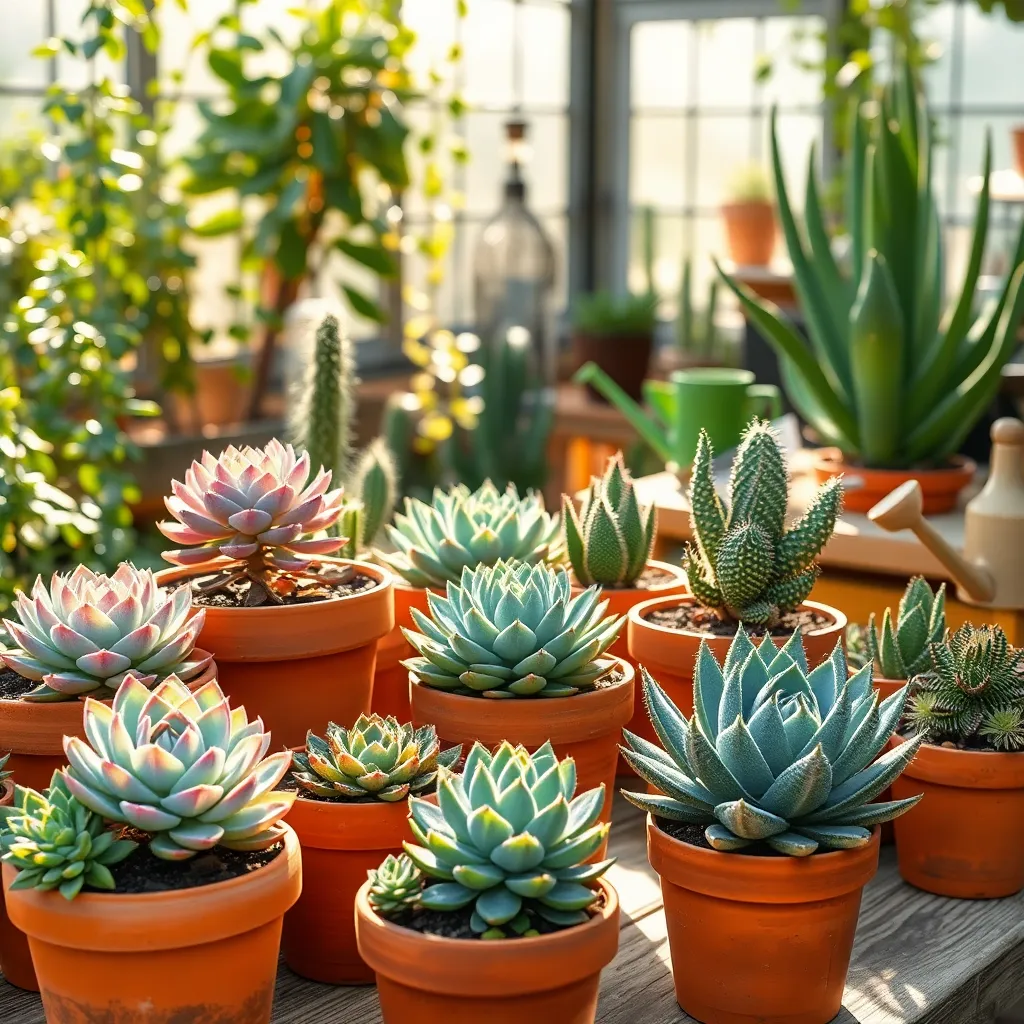
Succulents have become increasingly popular for their unique structures and low-maintenance care, making them an ideal choice for gardeners of all skill levels. To succeed with succulents, ensure they are planted in well-draining soil, such as a mix specifically formulated for cacti and succulents.
Understanding their water needs is crucial; succulents generally prefer a “soak and dry” method. Water them thoroughly, then allow the soil to dry out completely before the next watering, especially during their active growing season in spring and summer.
Additionally, succulents thrive in bright, indirect light, although some varieties can tolerate direct sunlight for part of the day. If growing indoors, place them near a south or east-facing window to provide optimal light conditions.
For more advanced gardeners looking to experiment, consider propagating succulents through leaf cuttings. Simply lay a leaf on top of moist soil and wait for roots to form, which can take a few weeks, offering a rewarding and cost-effective way to expand your collection.
Echeveria Elegance: A Pinterest Favorite
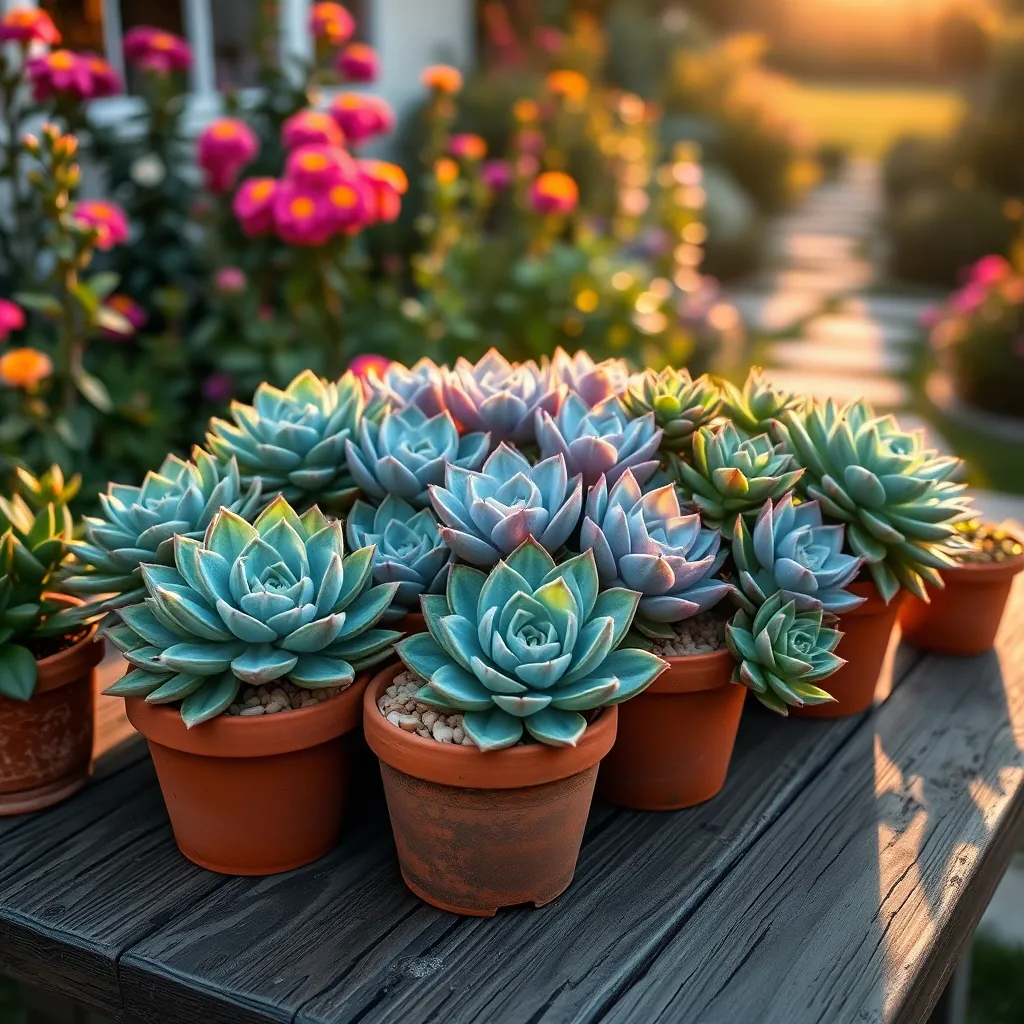
Echeveria Elegance has captured the hearts of Pinterest users with its stunning rosettes and easy-going nature. These succulents thrive in well-draining soil mixed with sand or perlite to prevent root rot, which is crucial for their health.
To encourage vibrant growth, place your Echeveria Elegance in a spot where it receives at least six hours of bright, indirect sunlight daily. Direct sunlight can cause leaf scorch, so a windowsill with filtered light or an east-facing position is ideal.
It’s important to water Echeveria when the soil is completely dry to the touch, typically every two to three weeks. Overwatering is a common mistake, so always ensure the pot has drainage holes to let excess water escape.
Advanced gardeners can propagate Echeveria Elegance by gently detaching healthy leaves and letting them dry for a day before placing them on top of moist soil. This technique not only expands your collection but also allows you to share this Pinterest favorite with friends.
Sedum Varieties Stealing the Spotlight
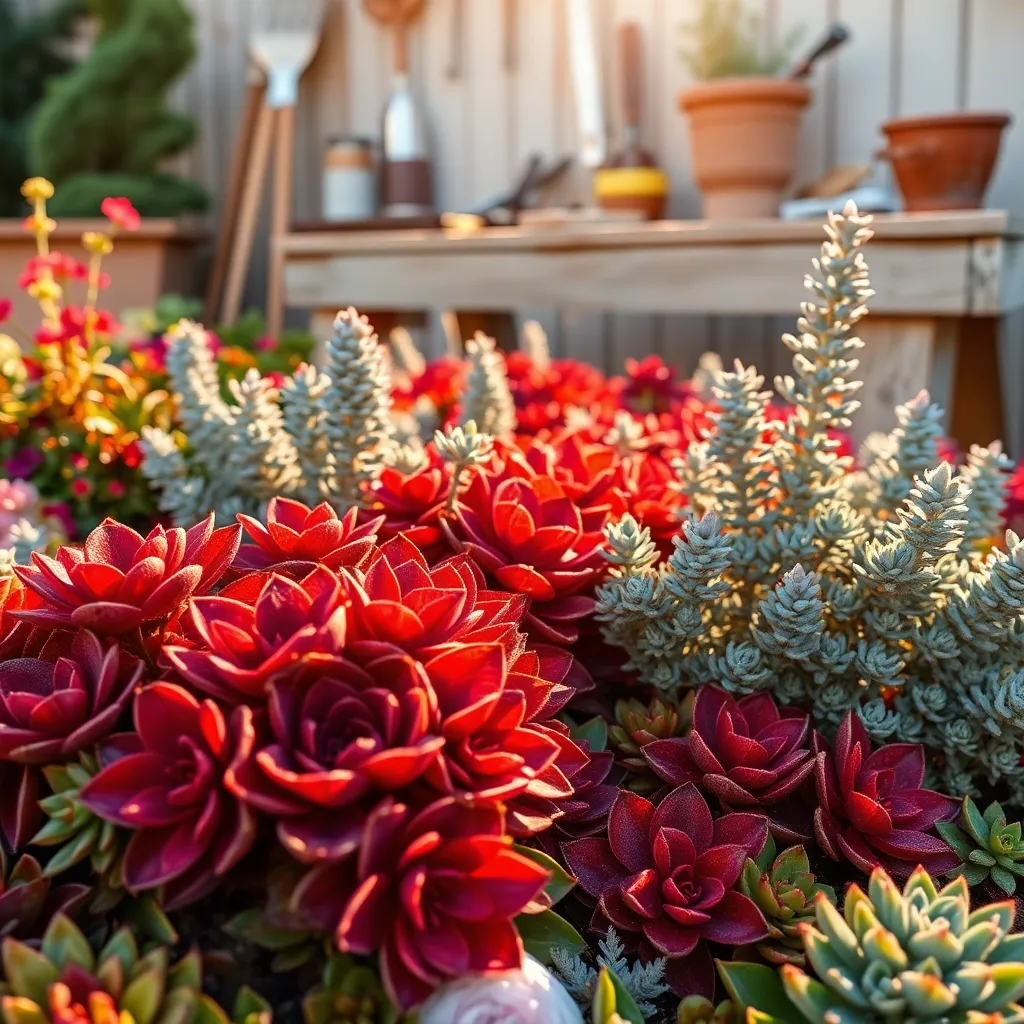
Sedum varieties are currently capturing the attention of gardening enthusiasts on Pinterest, thanks to their vibrant colors and resilience. These succulents are perfect for both beginner and experienced gardeners, as they are known for being low-maintenance and drought-tolerant.
To ensure your Sedum thrives, plant it in well-draining soil, such as a mix of cactus soil and perlite. Position your Sedum in a spot that receives plenty of sunlight, as these plants love bright, direct light.
Water your Sedum sparingly, allowing the soil to dry out completely between waterings. Overwatering is a common mistake; aim for once every two weeks, adjusting based on your local climate and season.
For gardeners looking to expand their Sedum collection, consider propagating through leaf cuttings or stem divisions. This not only saves money but also allows you to share your favorite varieties with fellow plant lovers.
Aloe Vera: The Healing Trend
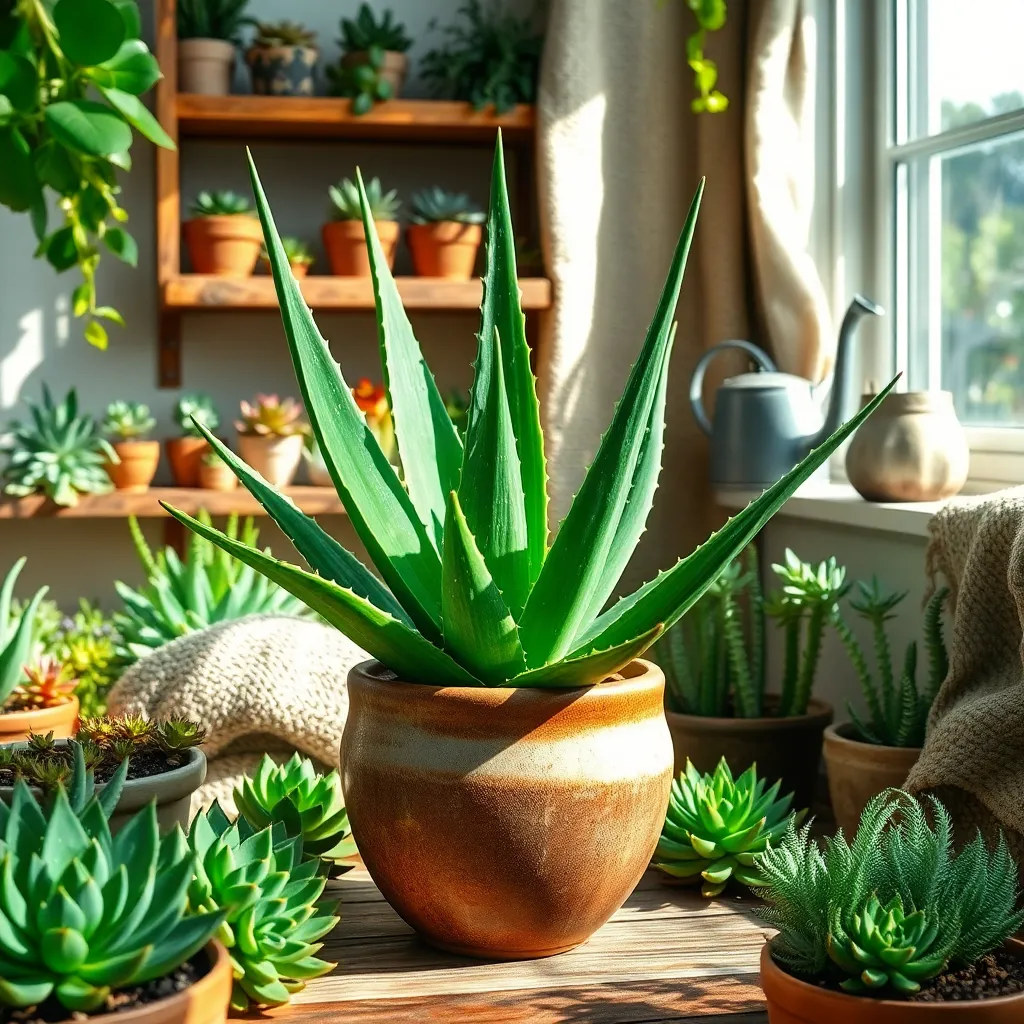
Aloe Vera, known for its healing properties, is a succulent that has captured the hearts of gardeners worldwide. Not only is it easy to care for, but it also offers a plethora of uses, making it a household favorite.
When it comes to growing Aloe Vera, selecting the right soil is crucial for its success. Opt for a well-draining cactus mix or create your own by combining equal parts of sand, perlite, and potting soil.
Watering Aloe Vera requires a delicate balance, as overwatering can lead to root rot. It’s best to allow the soil to dry completely between waterings, typically watering every three weeks in the warmer months and less frequently during winter.
For those looking to propagate Aloe Vera, the process is straightforward yet rewarding. Simply remove offsets from the base of the plant with a sharp knife, let them dry for a few days, and then plant them in a small pot with the same well-draining soil.
Haworthia: Striking Striped Beauty

Haworthia, known for its striking striped leaves, is a delightful addition to any succulent collection. This plant thrives in bright, indirect light, making it perfect for a sunny windowsill or a well-lit room.
To keep your Haworthia healthy, ensure that it is planted in a well-draining soil mix, such as a cactus or succulent blend. Water sparingly, allowing the soil to dry out completely between waterings to prevent root rot.
As these succulents are slow-growing, they require minimal maintenance, making them ideal for beginners. Advanced gardeners can experiment with propagating Haworthia by carefully removing offsets, or ‘pups’, and planting them in separate pots.
For optimal growth, fertilize your Haworthia sparingly during the growing season, using a diluted cactus fertilizer. Remember to reduce watering and stop fertilizing in the winter months, as this is the plant’s dormant period.
Aeonium’s Rosette Charm

Aeoniums are known for their stunning geometric rosettes, making them a popular choice for succulent enthusiasts. These unique plants thrive in bright, indirect sunlight, so placing them near a south-facing window can enhance their vibrant colors.
For soil, opt for a well-draining cactus mix to prevent root rot, which is a common issue with Aeoniums. Adding perlite or pumice can improve drainage, especially if you’re planting them in potting soil.
Watering Aeoniums requires a delicate balance; they prefer their soil to dry out completely between waterings. During their dormant summer period, reduce watering frequency, ensuring the soil remains mostly dry.
Advanced gardeners can experiment with propagation by taking stem cuttings in spring. Allow the cut ends to callous over for a few days before planting them in a sandy mix, and soon you’ll have new rosettes to admire.
String of Pearls: Cascading Wonder
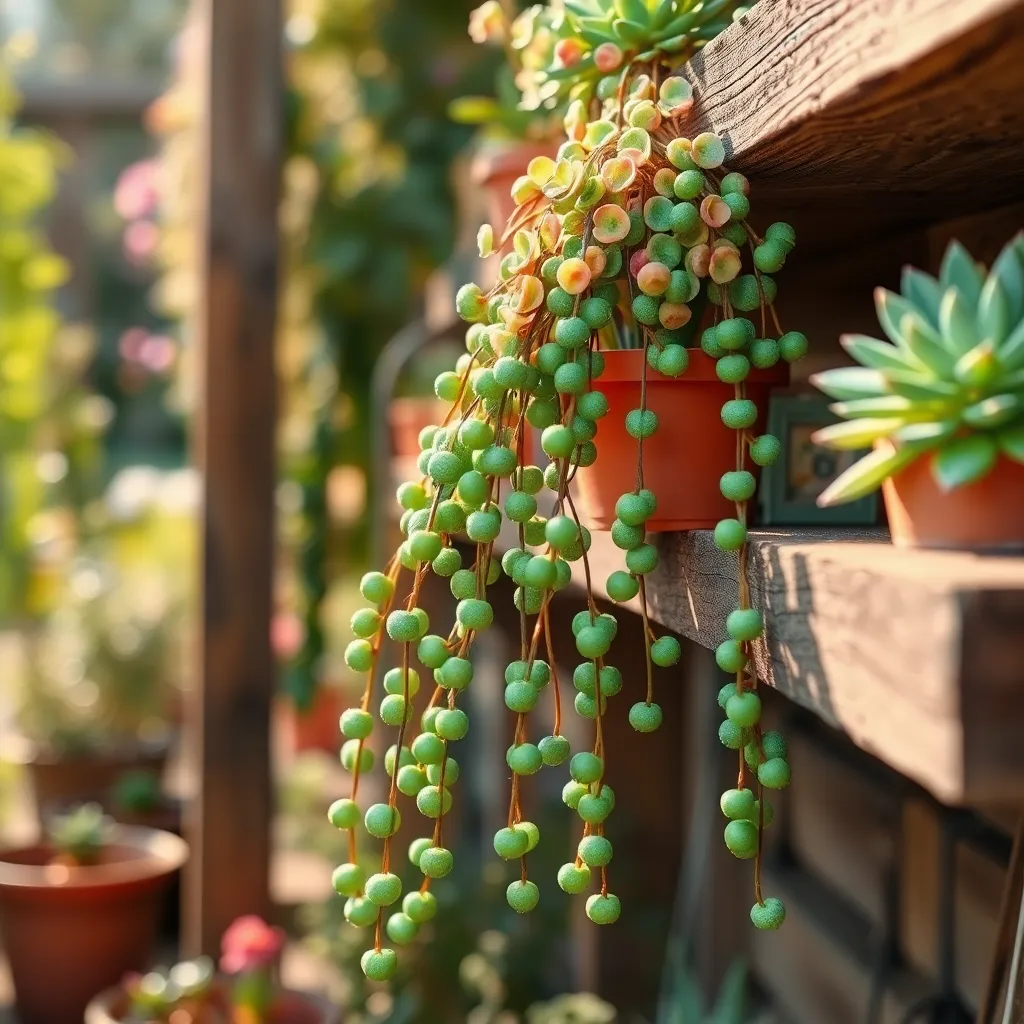
String of Pearls, a stunning trailing succulent, is perfect for adding a touch of elegance to any space with its cascading strands of bead-like leaves. To thrive, this plant requires bright, indirect light and well-draining soil; a cactus mix with perlite works best to prevent root rot.
Water this succulent sparingly, allowing the soil to dry out completely between waterings, typically every two weeks. Overwatering is the most common mistake gardeners make with String of Pearls, so it’s crucial to err on the side of less water.
Temperature is another key consideration, as String of Pearls prefers a warm environment and does not tolerate frost. For indoor gardeners, maintaining temperatures between 70-80°F (21-27°C) during the day is ideal, and you can easily achieve this by placing the plant near a sunny window.
For those looking to propagate, this succulent is quite forgiving and can be easily multiplied by cutting a few pearls with a sharp, sterile knife and placing them on top of moist soil. Propagation in spring or early summer gives the best results, as this is when the plant naturally enters its growth phase.
Zebra Plant: Bold Stripes Appeal
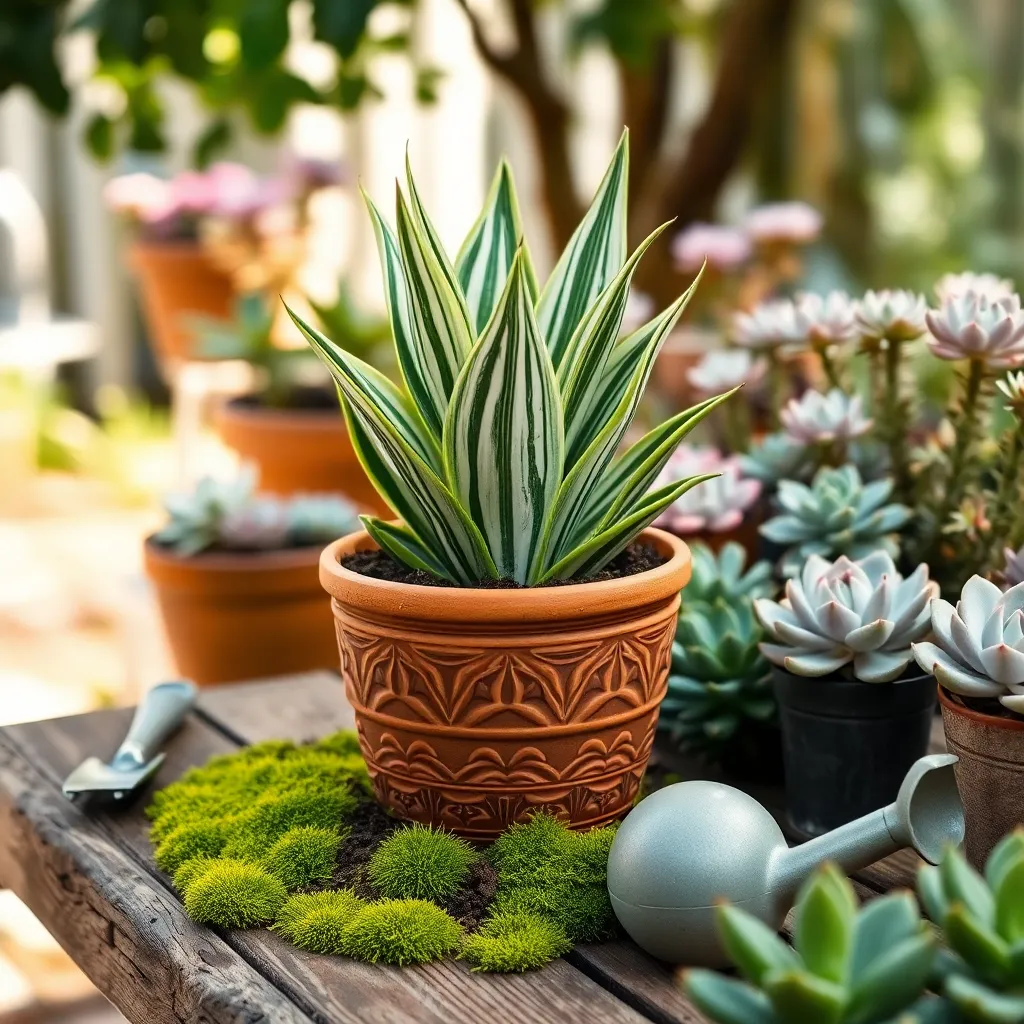
The Zebra Plant, with its striking white stripes on dark green leaves, is a showstopper in any succulent collection. Known scientifically as Haworthiopsis attenuata, this plant thrives in bright, indirect light, making it ideal for areas of your home that receive filtered sunlight.
Watering is crucial for the Zebra Plant’s health, as it prefers a “soak and dry” method. Allow the soil to dry out completely between waterings to prevent root rot, a common issue if the plant’s roots remain too wet.
Using a well-draining soil mix is essential for this succulent’s growth. Cactus potting mix is a great choice, as it provides the perfect balance of moisture retention and drainage.
Advanced gardeners can experiment with different pot materials, such as terracotta, to enhance air circulation around the roots. Additionally, fertilizing once a month during the growing season with a balanced, water-soluble fertilizer can promote robust growth and vibrant foliage.
Lithops: Living Stones Fascination
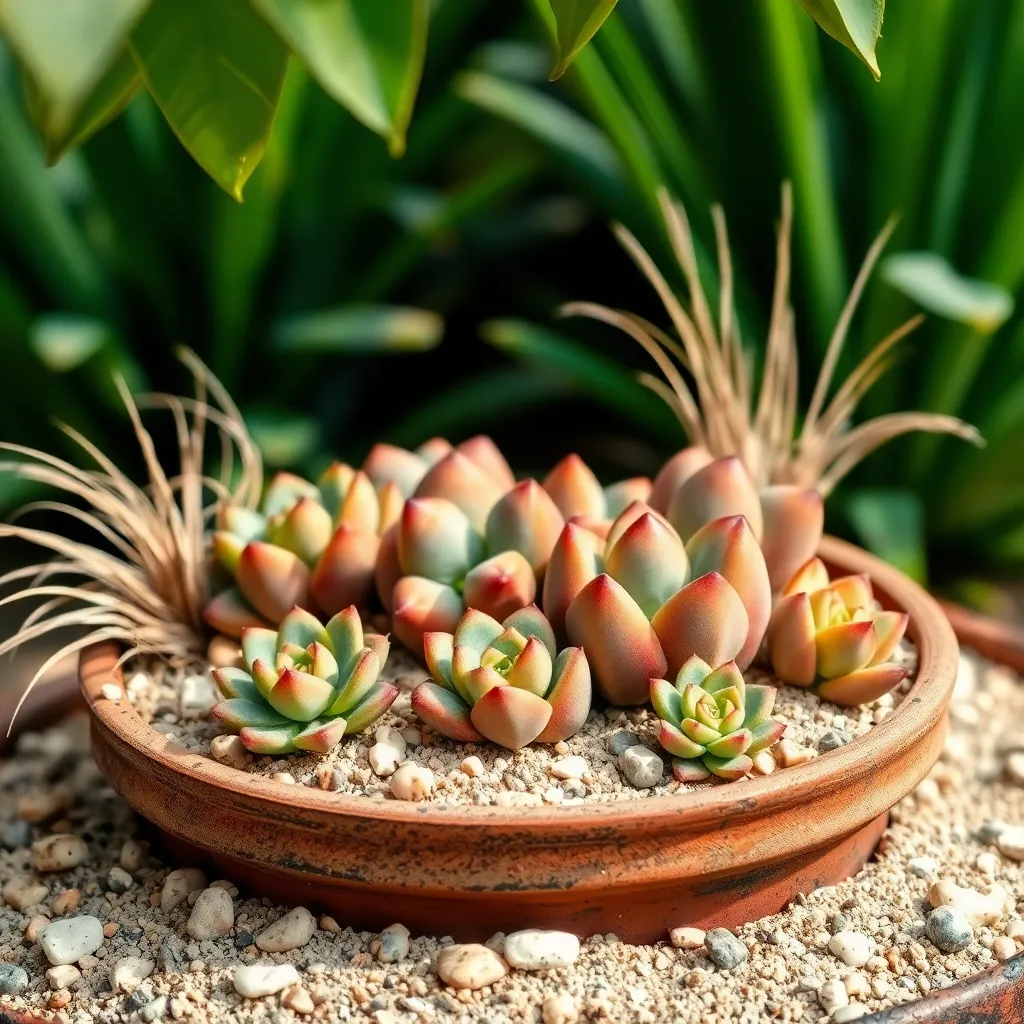
Among the fascinating world of succulents, Lithops, often known as “living stones,” captivate with their unique appearance. These intriguing plants mimic the pebbles and rocks of their native South African landscapes, making them perfect for a rock garden or a decorative pot.
To successfully grow Lithops, it’s crucial to understand their specific soil needs. Use a well-draining soil mixture, such as a blend of cactus potting mix with added perlite or pumice, to prevent root rot.
Watering Lithops requires a careful approach, as overwatering is a common pitfall. During their active growth period in spring and fall, water sparingly and allow the soil to dry out completely between waterings.
Advanced gardeners might consider mimicking the plant’s natural environment by providing bright, indirect light to encourage healthy growth. If you live in a region with intense sunlight, a spot with filtered light can prevent leaf burn while still promoting vibrant colors.
Jade Plant: Classic Succulent Choice
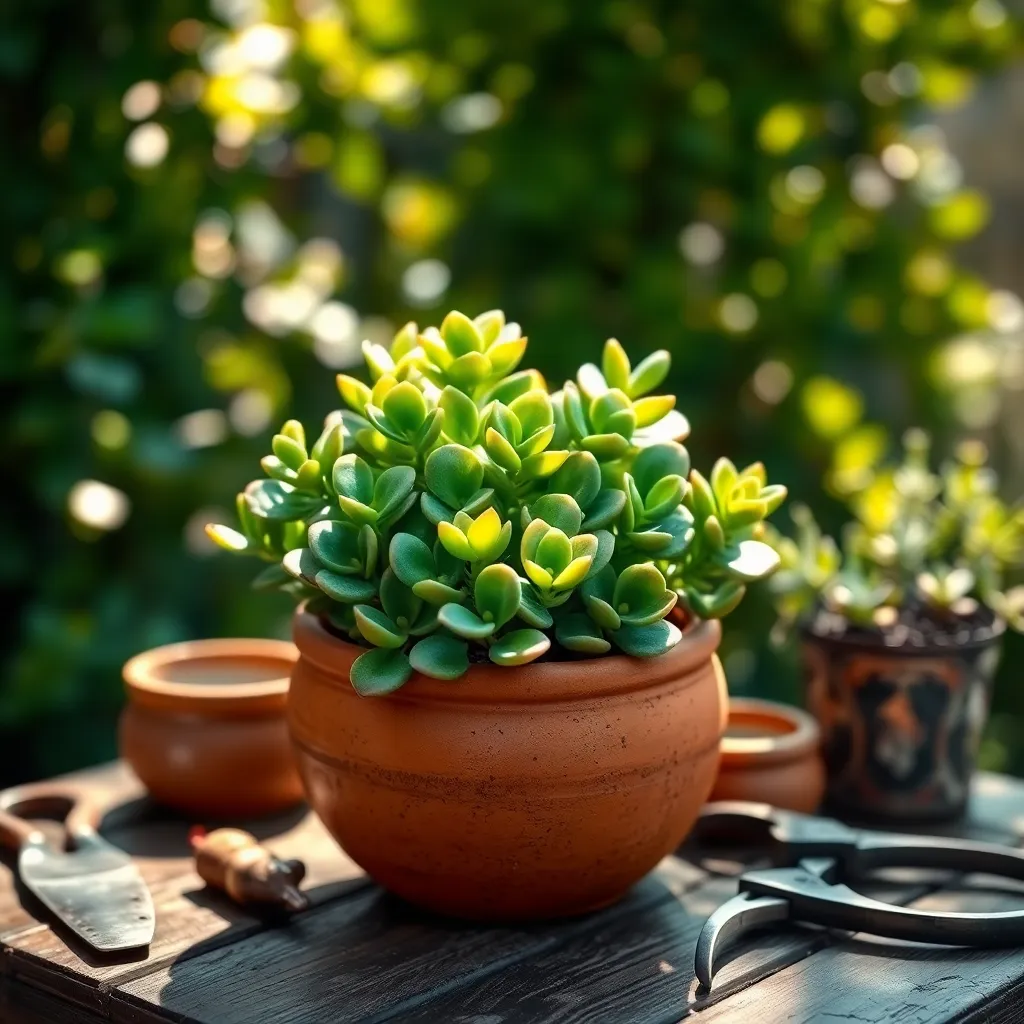
Jade plants, also known as Crassula ovata, are a classic choice for succulent enthusiasts due to their robust nature and striking appearance. These plants thrive in bright, indirect light, making them perfect for a sunny windowsill or well-lit room.
When it comes to soil, jade plants prefer a well-draining mix to prevent root rot, commonly achieved using a blend of cactus soil and perlite. Watering should be infrequent but thorough, allowing the soil to dry out completely between waterings.
For those looking to encourage bushy growth, consider pinching back the stems to promote branching. Fertilize sparingly during the growing season with a balanced, water-soluble fertilizer diluted to half strength.
Advanced gardeners might experiment with propagating jade plants from leaves or stem cuttings, a rewarding process that can expand your collection. Providing consistent care will result in a thriving jade plant that can live for decades, becoming a cherished part of your home.
Panda Plant: Fuzzy Leaf Allure
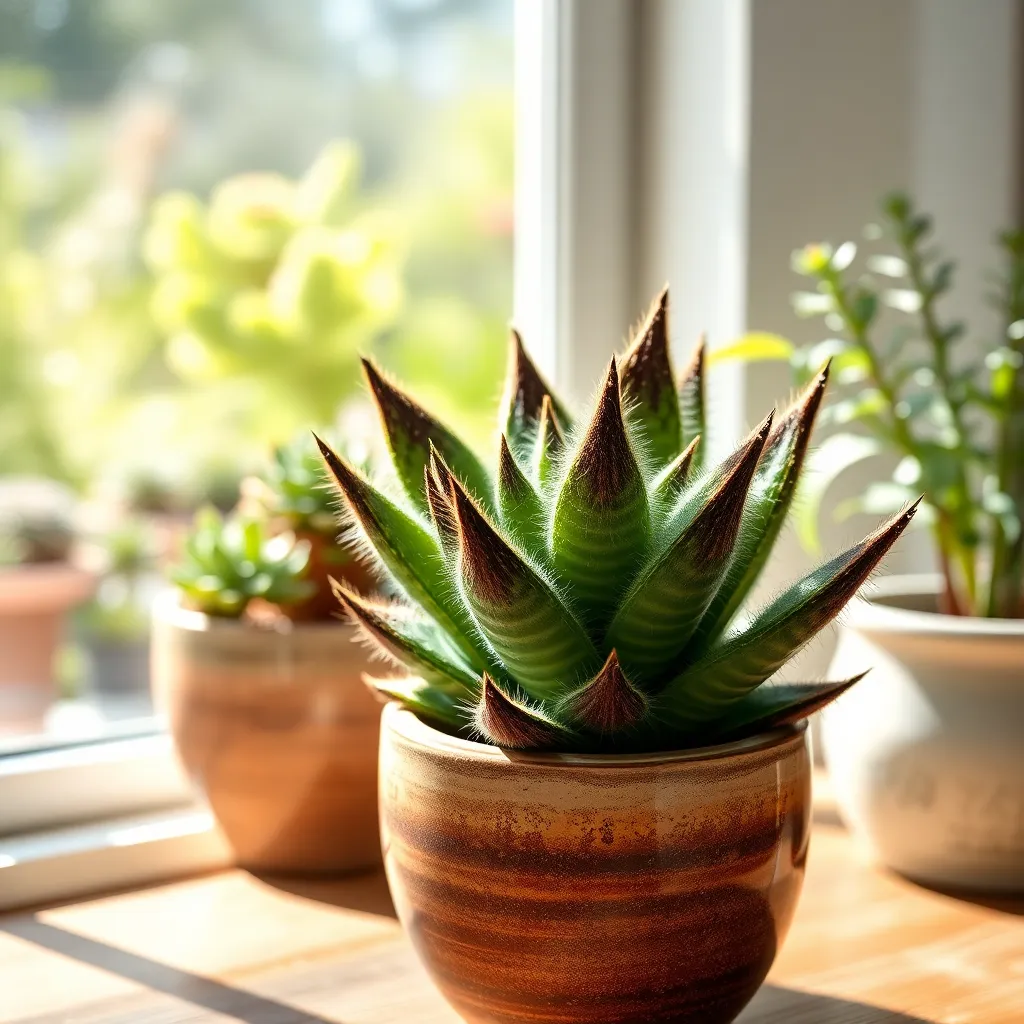
The Panda Plant, known for its distinctive fuzzy leaves, is a captivating addition to any succulent collection. Its botanical name, Kalanchoe tomentosa, hints at its naturally velvety texture, making it a tactile delight for gardeners and houseplant enthusiasts alike.
For those new to gardening, the Panda Plant is remarkably forgiving and easy to care for. It thrives in bright, indirect sunlight, so placing it near a sunny window where it can soak up daily rays is ideal.
Watering this succulent is straightforward: wait until the soil is completely dry before giving it a thorough soak. Using a well-draining soil mix is crucial, so consider a blend specifically designed for cacti and succulents to prevent root rot.
Advanced gardeners might appreciate experimenting with the plant’s propagation. Simply take a leaf cutting, let it dry for a few days, and then plant it in a fresh soil mix to grow new Panda Plants.
Burro’s Tail: Trailing Elegance
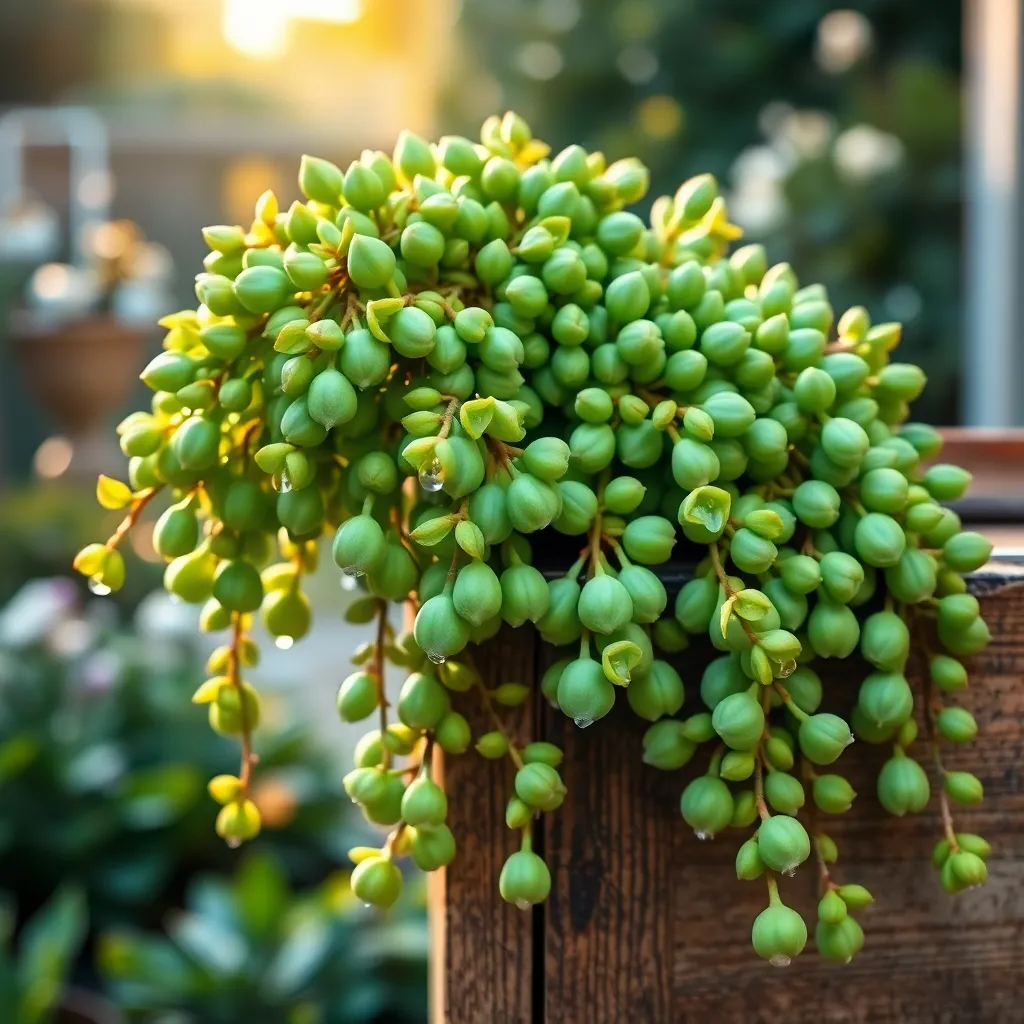
Burro’s Tail, also known as Sedum morganianum, is a captivating succulent that adds a touch of trailing elegance to any garden or indoor space. Known for its plump, cascading leaves, this plant thrives in hanging baskets where its unique beauty can be fully appreciated.
To ensure your Burro’s Tail remains healthy, it’s essential to provide it with the right growing conditions. This succulent prefers bright, indirect light, making it ideal for a sunny windowsill where it can soak up the rays without getting scorched.
Watering your Burro’s Tail requires a delicate balance; overwatering can lead to root rot, while underwatering might cause the leaves to shrivel. It’s best to let the soil dry out completely between waterings, ensuring good drainage by using a cactus mix or a well-draining potting soil.
For those looking to propagate their Burro’s Tail, the process is both simple and rewarding. Simply snip off a few healthy stems, allow them to callus over for a few days, and then place them on top of moist, well-draining soil, where they will soon develop roots and begin to grow.
Cactus Craze: Spiky Pinterest Picks
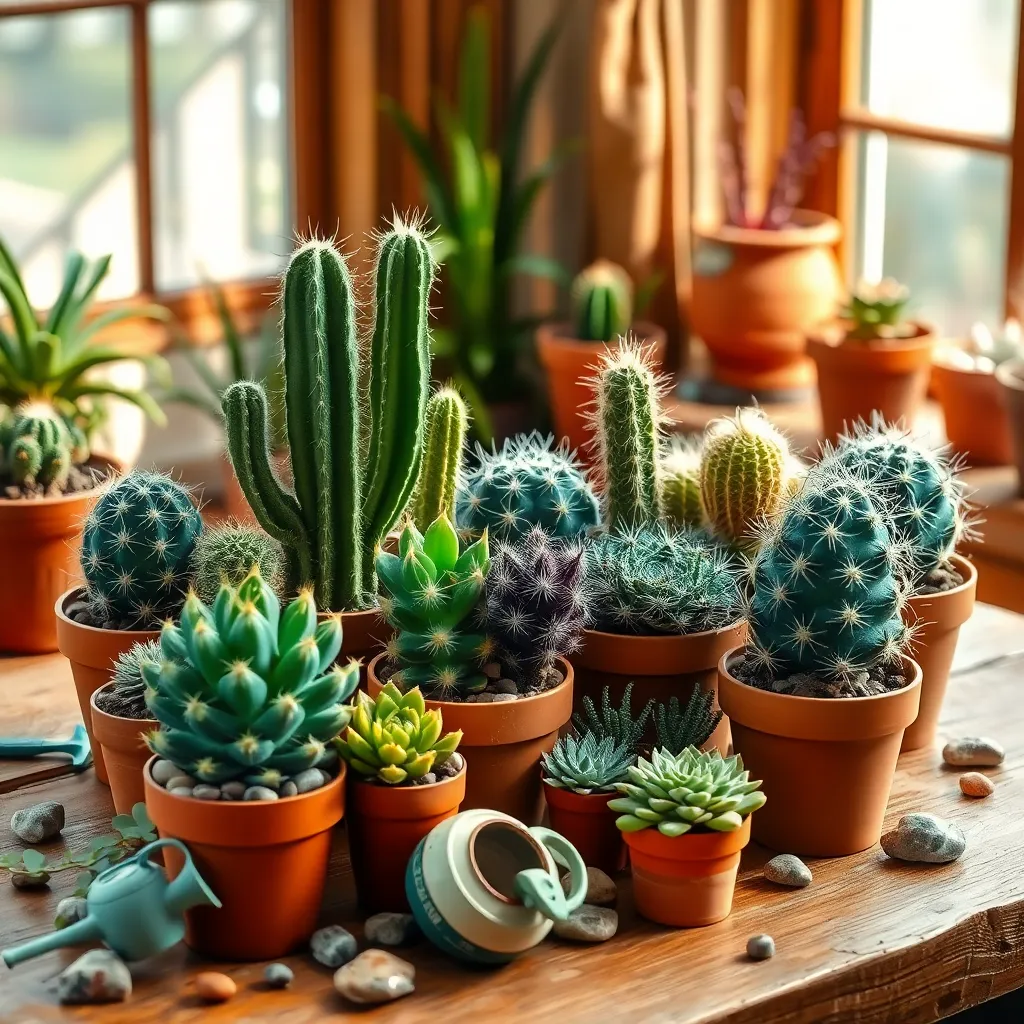
Diving into the world of cacti can be both thrilling and rewarding for gardeners of all levels. Cacti are not only visually striking but also relatively low-maintenance, making them excellent choices for both beginners and seasoned plant enthusiasts.
For optimal growth, it’s crucial to provide cacti with well-draining soil. A mix of cactus potting soil and perlite or sand will ensure proper drainage, preventing root rot and promoting healthy roots.
Watering cacti requires a delicate balance; overwatering is a common mistake. Allow the soil to dry out completely between waterings, and adjust the frequency based on the season—less frequently during winter when growth slows.
Sunlight is another critical factor in keeping your cacti healthy and vibrant. Most cacti thrive in bright, indirect light, so placing them near a south-facing window can mimic their natural desert environment, boosting their growth and encouraging flowering.
Unique Kalanchoe Blossoms
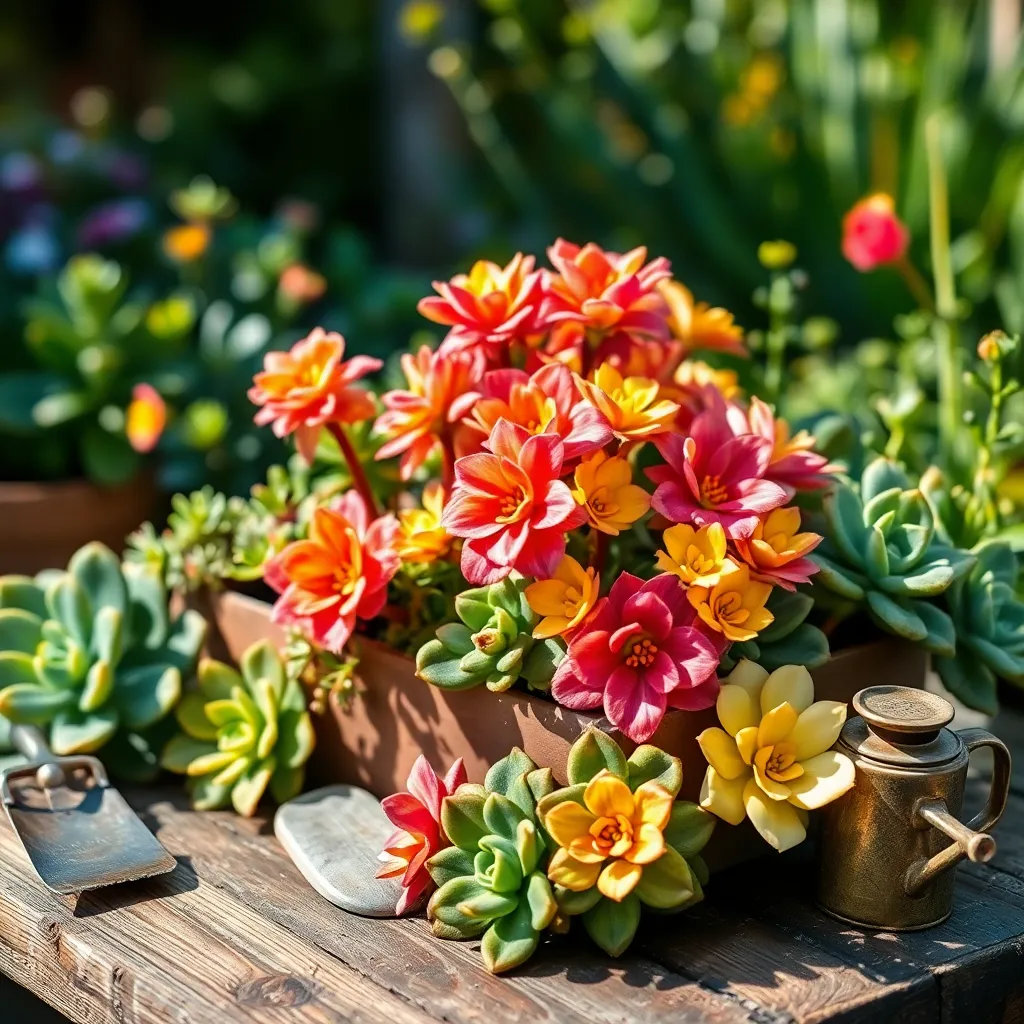
Among the kaleidoscope of succulents, Kalanchoe stands out with its unique blossoms that captivate gardeners year-round. These striking plants thrive in well-draining soil, so consider using a cactus mix or a combination of potting soil, perlite, and sand to ensure optimal drainage.
When it comes to light, Kalanchoe plants prefer bright, indirect sunlight to encourage blooming without scorching the leaves. Placing them near a south or east-facing window will typically provide enough light, but be sure to rotate the plant occasionally for even growth.
Watering is crucial for Kalanchoe care; allow the top inch of soil to dry out between waterings to prevent root rot. A general rule of thumb is to water every two weeks during the growing season, reducing frequency in the winter months when the plant is dormant.
For those looking to elevate their Kalanchoe game, try deadheading the spent blooms to encourage new flower growth. Additionally, fertilize sparingly with a balanced, water-soluble fertilizer every 4-6 weeks during the active growing season to keep your Kalanchoe thriving and full of dazzling blooms.
Graptopetalum: Ghost Plant Glamour
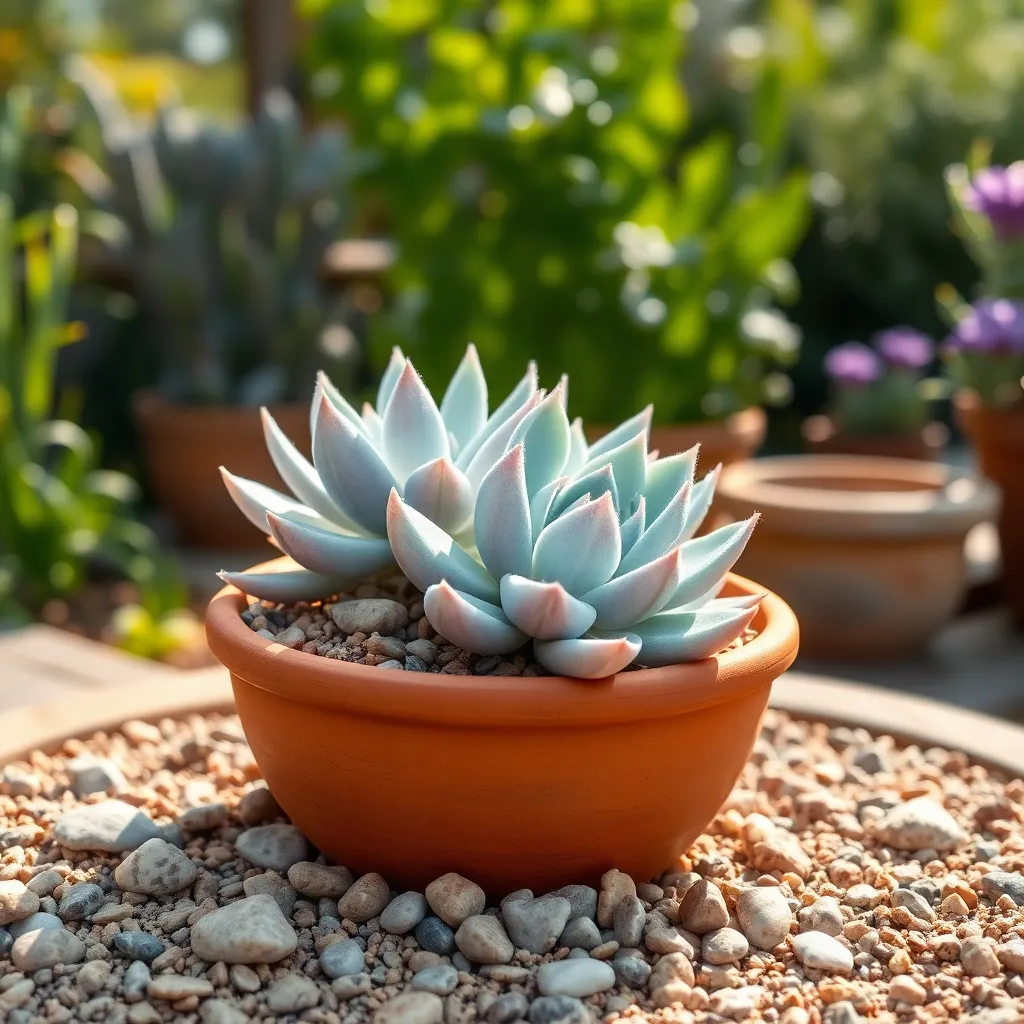
The Graptopetalum, commonly known as the Ghost Plant, brings a touch of ethereal beauty to any succulent collection. Its pale, silvery leaves form rosettes that can cascade elegantly from hanging baskets or spill gracefully over the edges of pots.
For optimal growth, place your Ghost Plant in a location that receives bright, indirect sunlight. Too much direct sunlight can scorch the leaves, while too little can cause them to lose their distinctive coloration.
Use a well-draining soil mix, such as a cactus or succulent blend, to prevent root rot. Water sparingly, allowing the soil to dry out completely between waterings, typically once every two to three weeks.
To encourage a fuller plant, consider trimming the rosettes and replanting the cuttings. This advanced technique not only helps maintain the plant’s shape but also can increase your collection effortlessly.
Conclusion: Embracing Succulent Trends

Embracing the trend of succulents offers a unique opportunity to bring low-maintenance beauty into your home and garden. These resilient plants are perfect for those looking to start their gardening journey or diversify their current plant collection.
For beginners, it’s crucial to start with the right soil mix; opt for a well-draining cactus or succulent soil to prevent root rot. Advanced gardeners can experiment by creating their own mix, combining regular potting soil with coarse sand and perlite for improved drainage.
Watering succulents can be tricky, but a simple rule of thumb is to let the soil dry out completely between waterings. During the growing season, typically spring and summer, aim to water once every one to two weeks, adjusting frequency based on your home’s humidity and temperature.
Light is another important factor; most succulents thrive in bright, indirect sunlight. However, some varieties can handle direct sun, making it essential to know the specific needs of each plant species you’re growing.
To keep your succulents thriving, consider the environment in which they are placed. While they are generally hardy, ensure they are not exposed to frost or extreme heat without proper acclimatization.
Finally, propagation can be a fun and rewarding aspect of succulent care, whether by leaf, division, or offsets. This not only expands your collection but also provides an opportunity to share your love of succulents with friends and family.
Conclusion: Growing Success with These Plants
In exploring the vibrant world of succulents, we’ve uncovered 16 unique varieties that mirror essential relationship concepts: resilience, growth, communication, adaptability, nurturing, trust, space, patience, balance, commitment, understanding, thriving under pressure, diversity, longevity, appreciation, and harmony. Each of these elements plays a crucial role in cultivating a thriving partnership, highlighting the beauty that blooms when care and attention are given to what’s important.
As a next step, choose one concept that resonates with your current relationship dynamic and implement it today. Whether it’s practicing patience or fostering open communication, small changes can lead to significant growth.
Remember, relationships require ongoing effort and inspiration. Bookmark this article for future reference to revisit these concepts and draw strength from them whenever you need a reminder of the power of nurturing your connections.
Looking ahead, embrace the journey of relationship success by continuously learning and adapting. With dedication and love, your relationships can flourish as splendidly as the most cherished succulents. Let this article be your guide and companion in the pursuit of enduring and joyful connections. Save it now, and take the first step toward a thriving relationship garden.

